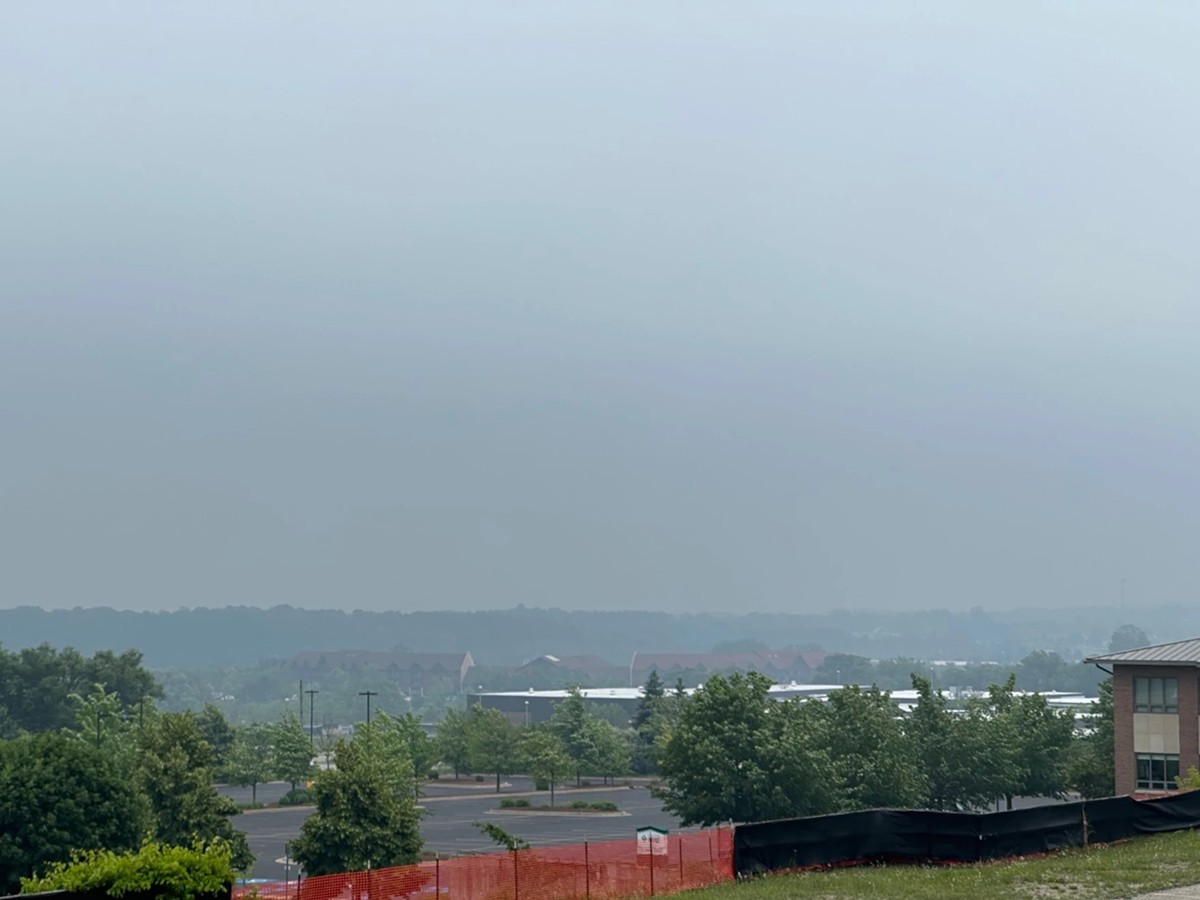This coverage is made possible through a partnership between IPR and Grist, a nonprofit environmental media organization.
Wildfires in western and central Canada spread rapidly this week, with smoke sweeping into the Midwest and triggering air quality alerts in several states. For some, it was a reminder of last year’s smoky conditions.
“The front came through — it kind of just dragged the smoke down to us in the Midwest, which is what we typically saw last year, too,” said Alec Kownacki, a meteorologist with Michigan’s Air Quality Division.
There were no alerts in northern Michigan, but the region did see some haze. In Minnesota, the situation was much worse.
“You looked outside and buildings more than a couple blocks away were starting to look smoky,” said Matt Taraldsen, the supervisory meteorologist at the Minnesota Pollution Control Agency based in St. Paul. “You could definitely see the smoke outside, you could smell it, you could even taste it in the morning. It was really gross.”
The air quality index across much of the Great Lakes showed “good” to “moderate” conditions as of Friday afternoon, according to AirNow, a partnership between federal, tribal, state, and local entities.
Dry conditions and high winds are driving Canada’s wildfires, following the country’s warmest winter on record and forcing thousands of people to evacuate.
Some are “zombie fires” that began last season and smoldered underground during the winter, reigniting this spring.
“It is so crispy out there,” said Jennifer Smith, the national warning preparedness meteorologist for the Meteorological Service of Canada. “It takes very little for a fire to spark in that region.”
While the movement of wildfire smoke is tough to predict, the location of the fires is an important factor.
Generally, agencies prioritize responding to fires that threaten human life and infrastructure. Because there are limited resources, those in more remote areas are sometimes left to burn out.
“It’s probably not going to get as many resources as quickly as a city that’s being evacuated, for example,” said Alexandria Jones, the communications manager at the Canadian Interagency Forest Fire Centre, which coordinates resources like aircraft and firefighters.
Last year, parts of the region and the northeastern United States saw some of the worst air quality in the world.
Some of that smoke came from areas that were hard to reach, according to Kownacki.
“A lot of wildfires that were causing the smoke were in very remote areas to where they couldn’t get any access to,” he said. “So they literally just said, ‘We just have to let it burn out because it’s in the middle of woods. There’s no access roads.’”
Improving indoor air quality is an important part of staying safe around wildfire smoke.
There are a number of ways to ensure better indoor air, and the Environmental Protection Agency has recommendations for purifiers, filtration devices, and more basic techniques to address exposure to smoke.


